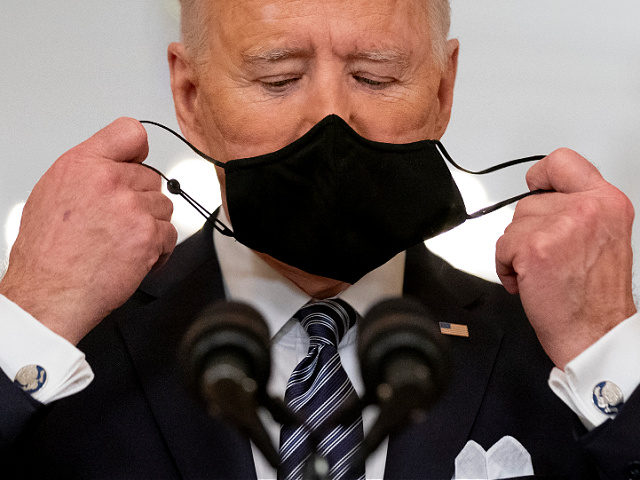U.S. incomes rose at a record-breaking pace in March, reflecting the billions of dollars of direct stimulus payments from the $1.9 trillion American Rescue Plan President Joe Biden pushed through Congress last month.
Household incomes jumped 21.1 percent in March, following a 7 percent decline in February, data released Friday showed. The stimulus bill signed into law in March delivered up to $1,400 to individuals that month, the third round of direct payments meant to ease the pandemic’s impact on the economy.
Yet much of the money was saved. Consumer spending rose by 4.2 percent, the Commerce Department said. The savings rate jumped to 27.6 percent, up from an already high level of 13.9 percent in February. Excess household saving now totals around $2.3 trillion.
That is an indication that many households did not need the handout. It also creates the potential for further inflationary pressures in the months ahead if consumers decide the spend down their savings.
The Fed at this week’s meeting kept its key interest rate at a record low of 0 percent to 0.25 percent and Fed Chairman Jerome Powell said the central bank will not be concerned by what it expects will be a temporary blip in inflation this spring. Powell has repeatedly predicted any rise in inflation will be “transitory.” But Richard Curtin, the chief economist of the University of Michigan’s Survey of Consumers, warned Friday that consumer sentiment was so strong that price pressures were likely to continue longer and rise higher than officials expect.
Analysts believe consumers will start spending their savings stockpile in coming months as increased vaccinations get them back into stores to shop, providing a strong boost to the overall economy this year.
“The strong consumer showing at the end of the first quarter sets the tone for a summer boom,” said Gregory Daco, chief economist at Oxford Economics. “As health conditions improve and the economy reopens, generous fiscal stimulus, rebounding employment and rising optimism will help unleash pent-up demand.”
Daco forecast that consumer spending will increase by more than 9 percent this year, the strongest performance since 1946.
Friday’s report showed that the 4.2 percent rise in spending reflected an increase of 8.1 percent in the purchase of goods and a smaller 2.2 percent rise in the purchase of services, a category which includes restaurant dining, entertainment and other activities which have suffered the most from the pandemic shutdowns. The expectation is that spending on services will keep rising if the virus situation keeps improving.
The government reported Thursday that the overall economy, as measured by the gross domestic product, rose at a robust annual rate of 6.4 percent in the January-March quarter. Many analysts believe that growth in the current April-June quarter will be even stronger, perhaps topping 10 percent.
The unexpected strength of the U.S. economy has created an unusual dilemma for the Biden administration. Officials formulated their three-part economic agenda—the American Rescue Plan, the American Jobs Plan, and the American Families Plan—during a period in which they expected the economy to be growing much more slowly. The pitch was going to be that the massive spending plans were necessary to rebuild the economy. That is a much less compelling message given the fast pace of the current rebound and trillions of dollars of excess savings in American bank accounts.
–The Associated Press contributed to this report.

COMMENTS
Please let us know if you're having issues with commenting.